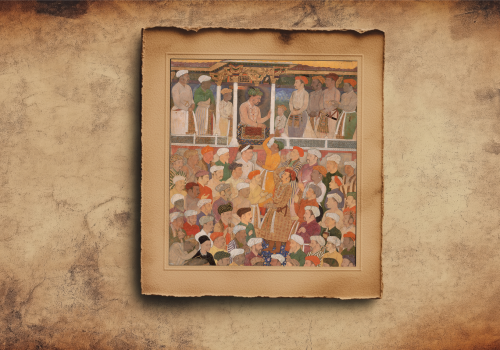WAQI A-I-JANG-I-SIKKHAN, by Diwan Ajudhia Parshad, is a chronicle in Persian prose detailing the events of the First Anglo-Sikh War (1845–46). The narratives of the battles of Pherushahr and Sabhraon, included in the work, were derived from two separate manuscripts. The text was translated into English by V.S. Suri and published under the title Waqi`ai Jangi Sikkhan. It first appeared in the Journal of the Panjab University Historical Society (Vol. VIII, April 1944, Lahore) and was later reproduced in The Panjab Past and Present (Punjabi University, Patiala, Vol. XVIII, April 1984). A Persian manuscript copy of the text is preserved at Khalsa College, Amritsar.
Diwan Ajudhia Parshad (d. 1870) had served the Sikh State as both soldier and civilian, dating back to the era of Maharaja Ranjit Singh. While the exact date of the manuscript is not mentioned, internal evidence indicates it was written soon after the events of 1846. The author claims his accounts of the battles of Pherushahr and Sabhraon are based on personal experience and reports from notable individuals present at the scenes. Unlike traditional Persian chronicles, the text is straightforward and avoids literary or dedicatory embellishments.
Battle of Pherushahr The author records that upon learning of the British East India Company strengthening its frontier with additional troops, the Sikh soldiers anticipated danger and suspected collusion between Lahore’s leadership and the British. Disregarding their officers’ advice, the soldiers resolved to cross the Sutlej and attack the British cantonment at Firozpur. On 14–15 December 1845, three brigades of the Fauji-Khas crossed the river, followed by other regular and irregular troops.
On 18 December, news arrived of the British Governor-General advancing with reinforcements through Mudki toward Firozpur. The Sikh plan was for the Fauji-Khas and other units already across the river to advance directly to Pherushahr and Mudki, while Commander-in-Chief Tej Singh stayed at Pherushahr with remaining forces to target Firozpur.
The British met the Sikh advance north of Mudki, where the Sikhs fired first. According to the account, a group of riderless horses from the British regiment galloped into the Sikh lines, causing confusion. Mistaking the incident for a cavalry charge, the Sikh soldiers panicked and fled amidst scattered firing. Despite the British holding their position overnight, the Sikhs retreated to Pherushahr, abandoning some of their guns.
The battle at Pherushahr took place on 21–22 December 1845. Reinforcements under Tej Singh had not yet arrived when the British launched an artillery assault. By the next morning, the Sikhs had been defeated and dispersed. Tej Singh’s brigade engaged briefly with British artillery but soon withdrew across the Sutlej toward Sabhraon.
Battle of Sabhraon The battle of Sabhraon was fought at the insistence of the rank-and-file soldiers, against the advice of the officers and Sardars. Some leaders had advocated for negotiations with the British, reasoning that an apology might placate the paramount power and preserve Punjab as the Sikhs’ homeland. However, the soldiers rejected this counsel, preferring to confront the British.
The Sikhs constructed a bridge of boats across the river at Sabhraon and established a fortified bridgehead with breastworks of sand and mud, surrounded by a trench. On 10 February 1846, before dawn, the British opened their attack with artillery fire, followed by an infantry charge. The Sikh howitzers reportedly fired only once before their crews fled, leaving the ghorcharhas (cavalry) to resist the British onslaught. Despite their bravery, most of the Sikh cavalry were killed or wounded. The remaining troops retreated toward the bridge, which collapsed under the weight of fugitives.
Sardar Sham Singh Atarivala and his troops fought valiantly, but they too succumbed to the British attack. The manuscript lists Sardar Sham Singh as a cavalry officer in the Fauji-Ghair-A`in (irregular army).
Analysis of the Chronicle Diwan Ajudhia Parshad’s account is noticeably pro-British. He commends the British army’s strength and valor, writing approvingly, “on that day the truth had been revealed.” However, the manuscript omits mention of the unmatched bravery of Sikh soldiers or the betrayal by their commanders—facts acknowledged even by contemporary British writers. The author does not address the inefficiency and cowardice of the officers responsible for commanding the Sikh forces.
References:
- Kirpal Singh, A Catalogue of Persian and Sanskrit Manuscripts, Amritsar, 1962
- Suri, Sohan Lal, Umdat-ut-Twarikh, Lahore, 1885–89







